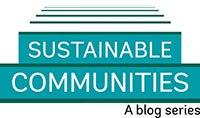Also available in: Myanmar (.pdf)

Struggles over land in Myanmar have been a defining characteristic of the country’s six decades of armed conflict.
In the past, government acquired lands for extracting natural resources, commercialized farming, and ambitious infrastructure projects, such as building of the new capital city of Nay Pyi Taw. Today, claims over land acquisition injustices dominate public discourse and the new government’s agenda. In parallel, infrastructure and institutions for land administration and property markets are grossly outdated and weak.
Issues in access, security, and transactability of land are likely to continue taking a prominent role as the demand for land increases in step with growing private investment and economic prosperity. Reaching agreement on land claims, building a robust land tenure system, and land markets will be crucial to the country’s future on a number of fronts:
- Social cohesion and stability. Access to land will be important for reconciliation. Various parliamentary committees have received over 8,000 territorial claims, calling for rectification of past land confiscations. The challenge of addressing those claims is technically, socially, and politically enormous and, as experience elsewhere demonstrates, might require decades. For example, in a number of Eastern European countries, there are still cases of pending property restitution and compensation, even though the socialist rule ended more than 25 years ago.
- Poverty reduction. Myanmar’s population is still mostly rural. Rural areas are also home to 70% of the country’s poor, who survive largely off small-scale agriculture. Land is fundamental to their income and identity, as well as to their social safety. Security of tenure, clarity of permitted uses, and ability to fairly transact land will provide assurance to their livelihoods and encourages investment in their land assets.
- Economic growth. Myanmar has one of the lowest population densities in the region, with fertile lands and big potential to increase agricultural production, yields, and profits. Moreover, the country aims to capitalize on its strategic location as a trading hub at the crossroads of India and China. Myanmar has already seen peace dividends, with annual growth topping 8.5% in 2015 and 7% in 2016. However, general uncertainty over land ownership and land use, along with outdated land records, maps, and processes, have left investors weary and concerned over the risk of future claims. The World Bank Investment Climate Assessment of 2014 identifies access to land as the third most important constraint to investment in Myanmar, after finance and access to electricity.
- Sustainable urbanization. Myanmar is still a rural country—by population and economy—but that is changing quickly. Outdated land records and plans, permits, and property taxes are not at a sufficient level to support the burgeoning urban population and demands for housing, offices, parks, and the myriad of other uses necessary for vibrant cities. Without functioning and transparent land administration and markets, urbanization will be informal, haphazard, and deleterious for economic growth and the environment.
Encouragingly, the government is moving fast to address long-standing land disputes as well as set the course for well-managed land administration. In early 2016, after two years of structured discussions with civil society groups, Myanmar adopted the National Land Use Policy. This policy clarified the guiding principles and regulatory and institutional framework for land tenure, use, and administration. The preparation of first new laws has started. The government has also established the Central Committee on Confiscated Farmlands and Other Lands, which has already settled a number of cases.
In a forthcoming post, we will highlight some of the government’s major projects and initiatives, and discuss how they work to address the acute challenges identified here.



Join the Conversation